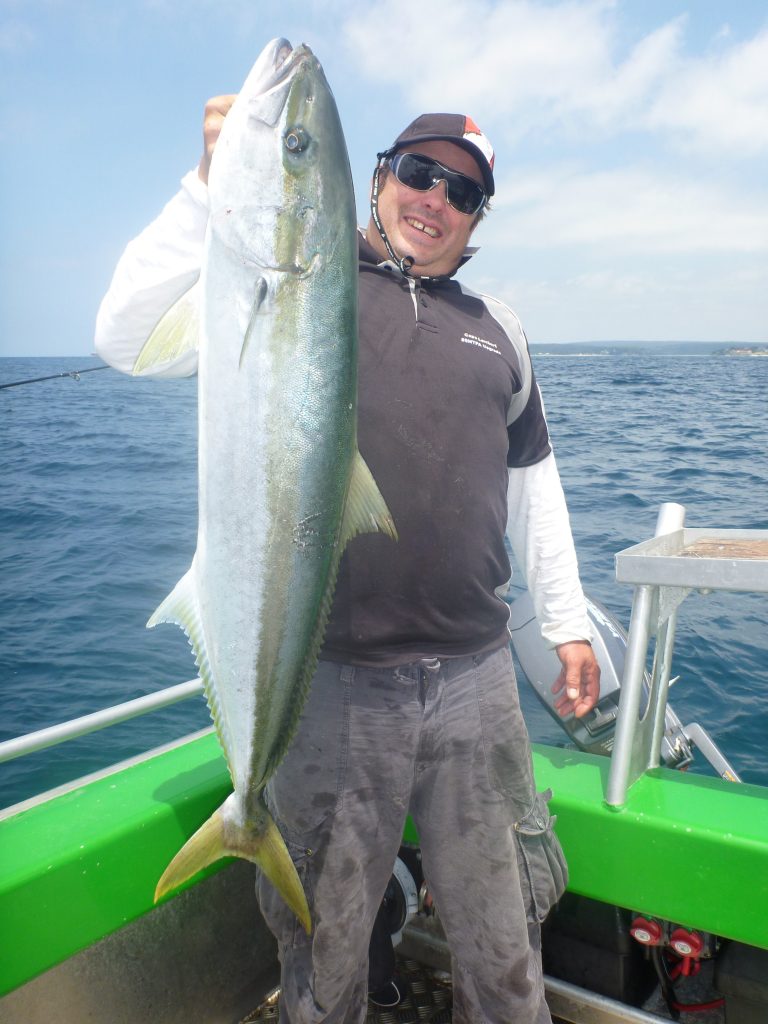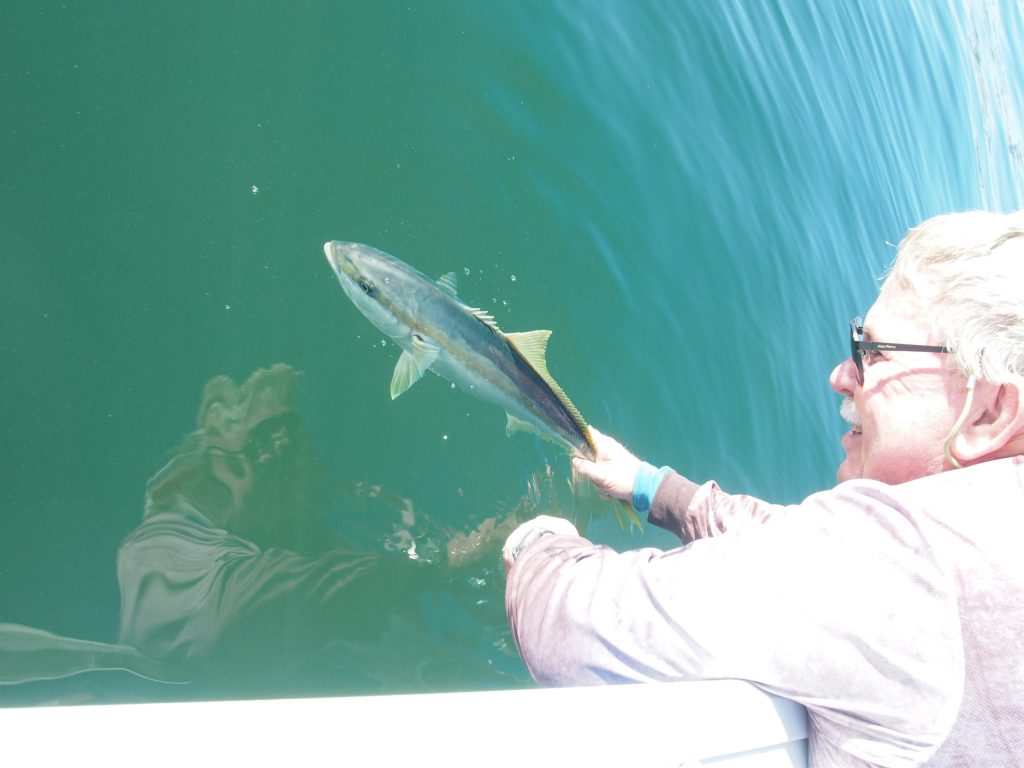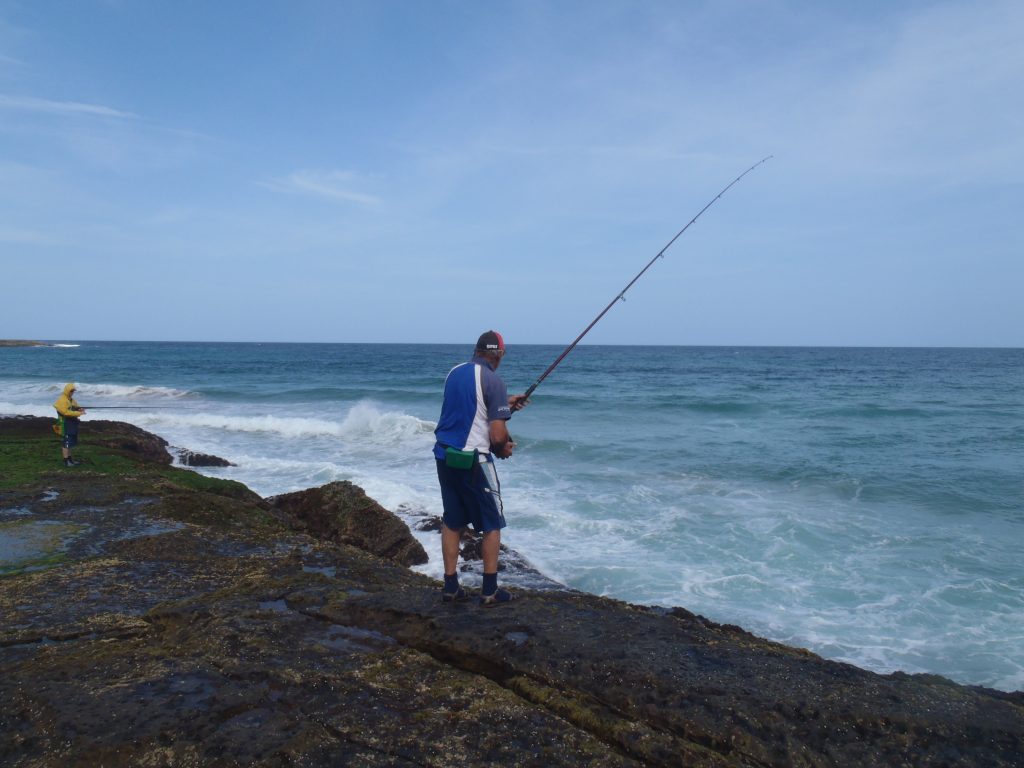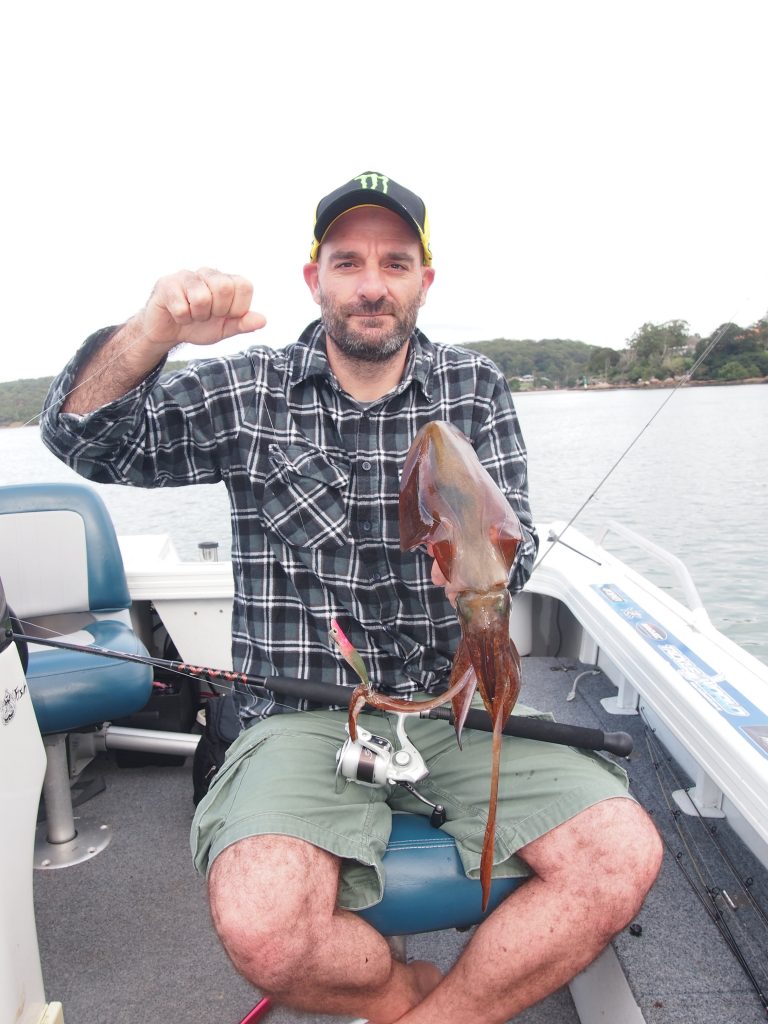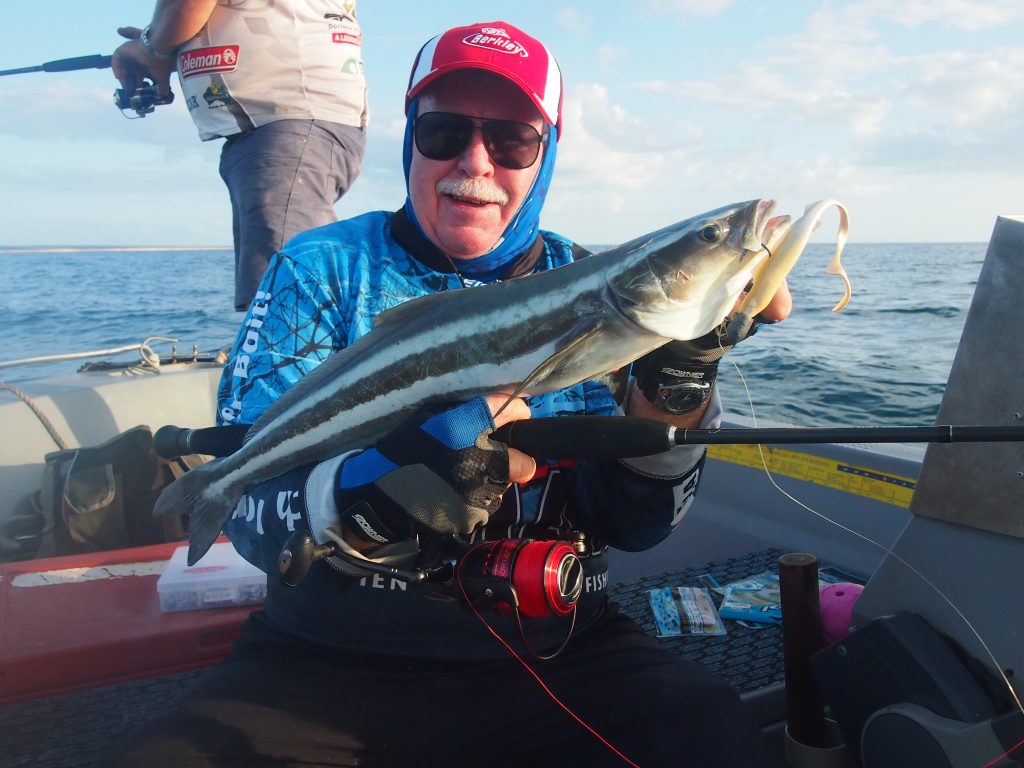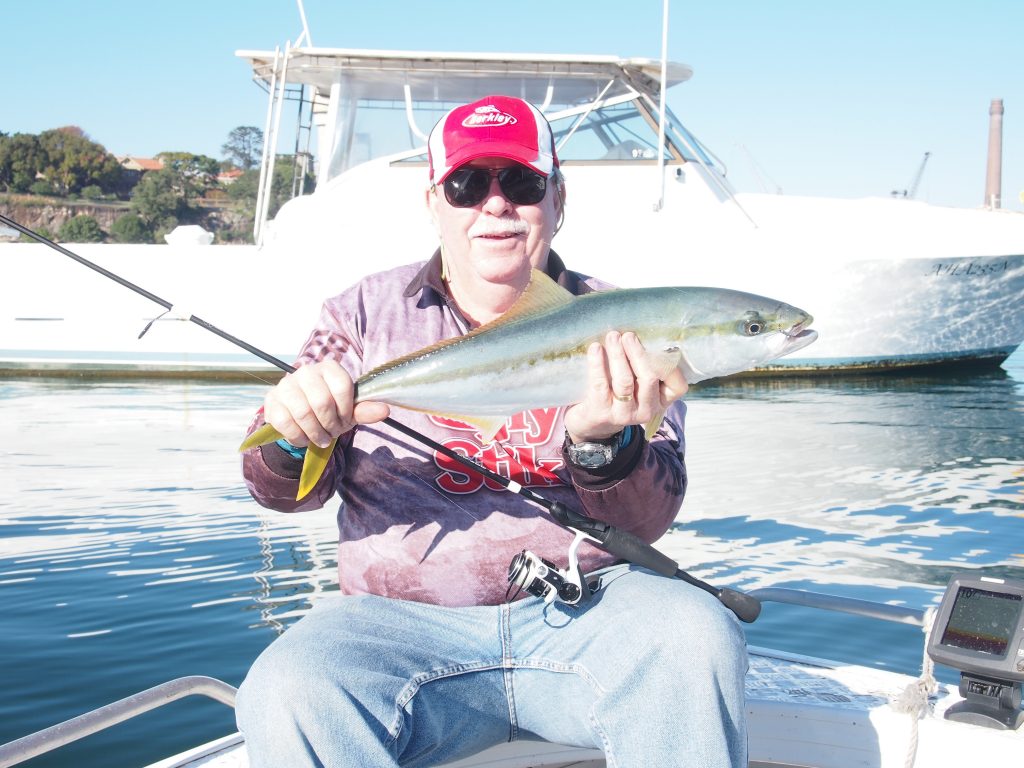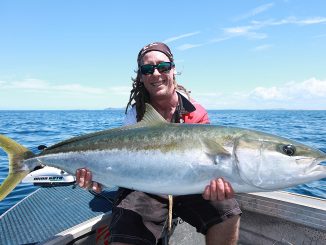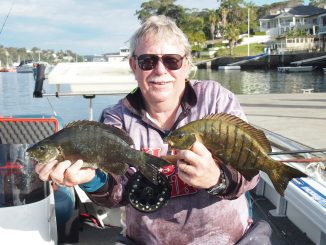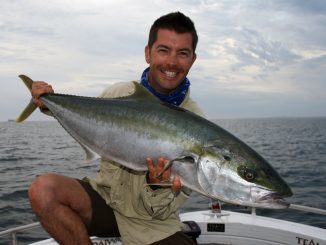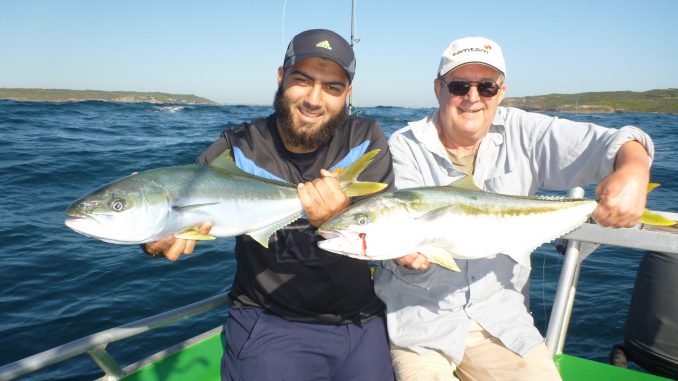
by Gary Brown •
Pound for pound, yellowtail kingfish are one of the hardest fighting fish in the water. At times, they can be led to the boat with so much ease that they’ll completely surprise you and explode right in your face, resulting in a bust-off or sometimes a broken rod.
Yellowtail kingfish can be found throughout the world in the cool temperate waters of the Pacific and Indian oceans off South Africa, Japan, the USA and Australia. In Australia, they can be found from North Reef in Queensland, around the southern coast and up to Shark Bay in WA. They can also be caught off the East Coast of Tasmania, Norfolk and Lord Howe islands. Yellowtail kingfish love to hang around structure and wait for that unsuspecting feed to come along. They can also show up in the most unexpected places.
A couple of years ago, I was fishing in a bream tournament on the Parramatta River, casting lightly weighed 2” Gulp shrimps at the front edge of the stormwater drain – a 75cm kingfish took the plastic as soon as it hit water. All hell broke loose as it screamed off around the mooring rope of a nearby yacht. I was only able to ease the kingfish around the rope and into deeper water, because I threw the bail arm over. Then I could slowly work the fish back to the boat and into the net.
As stated, yellowtail kingfish love structure. This structure could be in the form of offshore reefs, sunken wrecks, a headland, a breakwall, rock gutters, wharves, bridge pylons, floating pontoons, current lines, marker buoys, channel markers, drop-offs, boats on swing moorings, bait balls, but sometimes they hang out in the middle of nowhere. To help you catch yellowtail kingfish, here are some tips on where to find them, rigs to try, techniques, and gear to use.
Rigs
When chasing yellowtail kingfish, the rig can be as simple as a running ball sinker down onto the bait or as complex as trolling a dead swim bait. I believe in keeping it as simple as possible. There are only six rigs I use: running ball sinker onto the bait, whole bait on a set of ganged hooks, live baiting a whole squid, sliding snooded hooks, bait suspended under a bobby cork, or a bait suspended under a balloon.
Techniques
Try anchoring about 6-10m up current of a marker buoy or channel marker. Once you’re set up, you need to have a small, but steady berley trail flowing out of your berley bucket. This may consist of old pilchards, tuna and chicken pellets. Once the berley stream has been set up, chop up some whole pilchards or tuna cubes and drop over a couple pieces every few minutes.
Now that you’ve enticed the yellowtail kingfish, drop over pilchard on a set of ganged hooks and slowly feed it out through the berley trail. At the same time, you could also set a whole squid, dead or alive, under a bobby cork and have it positioned about halfway between the back of the boat and the structure. Your third outfit would be lowered to about a metre off the bottom. This gives you three options to find out where the fish are holding. You may have all three go off at the same time!
Downrigging your live or dead bait covers more ground than at anchor. I have two different ways that I down rig. One is where the bait is attached to a clip just above the downrigging bomb. The bait can be set 3-6m back, then lowered to just off the bottom while trolling at 3-5 knots.
The other is what I call a poor man’s downrigger – put a larger sinker above the swivel then have a leader no longer than the length of the rod. This is then lowered to the bottom and the rod placed in the rod holder. It’s simply a matter of putting the motor in gear and then out of gear to keep the rig just off the bottom.
If you are not into baits and prefer soft plastics, position the boat about 6-8m up current or upwind of the channel marker, buoy, bridge pylon or bait ball. Aim your cast so that the weighted soft plastic lands as close to the structure as possible. You could either start the retrieve straight away or allow the plastic to sink for a few seconds, then start the retrieve. The retrieve speed can be varied from a slow wind, stop and start jerking motion, to a moderate or quick retrieve where the soft plastics is skipping across like a fleeing garfish would.
When targeting kingfish off the rocks you could also suspend your bait under a bobby cork or a party balloon that has only been blown up to half its size. This will allow the balloon to be blown away from the rocks while stopping the bait from swimming back down.
When targeting kingfish off the rocks I prefer to look for a deep water headland or a narrow gutter that’s deep. With this type of structure, I’ll use a whole garfish or pilchard on a set of ganged hooks and my rod will be at least 3.6m long. My cast will be directed so I can retrieve the bait in a skipping motion along the surface over and through the white water.
If you’ve never tried using blades for kingfish, then you’re missing out. They’re very effective lures to target kingfish while chasing them over deep water reefs and wrecks. They’re also effective jigged beside wharves, marker poles, buoys and along drop-offs. Lower the blade to the bottom and then slowly jig the rod up and down. Much like when you are dunking a tea bag.
Boats on swing moorings and pontoons and are not only great places to throw small plastics for bream. They are also great for casting those 5-7” weighted soft plastics. Kingfish will hold up under some boats, their moorings and also under pontoons. Many times I’ve cast a soft plastic meant for a bream, only to have it monstered by a kingfish.
You’ll need to set yourself so that the boat is parallel to the side of the boat on the swing mooring. Cast the weighted soft plastics up past the boat, as close to the side of the boat as possible and then allow it to slowly sink. Once out of sight, just give it a couple of tweaks and then allow it to sink again. Repeat this process back to your boat. The use of an electric motor will make things easier, but you can still use this technique if you only have your main motor. You just need someone to position you for that all-important cast.
Gear
Yellowtail kingfish can be caught on just about every outfit you can find in a tackle shop, from a light spin to a 24kg game outfit. What you use will depend on your preference and budget. Maybe you prefer a fly or game outfit, or maybe you like a hand burning sensation when it comes to fishing with a hand line. I have three outfits I use when targeting kingfish – off the rocks, offshore and in the bays and estuaries.
Off the rocks, I use a Shakespeare Ugly Stik Gold, 8-12kg, a 3.6m rod mounted with a 6500 Pflueger Salt threadline spooled with 10 and 15kg Fireline. Offshore, for trolling, down rigging and live baiting I use either a Shakespeare Ugly Stik Gold 10-15kg, 1.8m rod mounted with a Penn Squall 40LD Overhead spooled with 15kg Spiderwire, or a Shakespeare Ugly Stik Gold 6-10kg, 1.95m rod mounted with a Penn 6500 Spinfisher and spooled with 15 kg FireLine.
For bays and estuaries, plastics and blades, my outfit is a Pflueger President 3-6kg, 2.1m rod mounted with a Pflueger Salt 40SW threadline reel, spooled with 6kg FireLine Exceed. For more information on how to rig your squid, refer to my article on winter squid options in the June 2016 issue, ‘On the plate or use as bait, that is the question’. Look for it online.
Thanks to Scotty Lyons and Roland Persson for their help with a few photos putting this article together.

